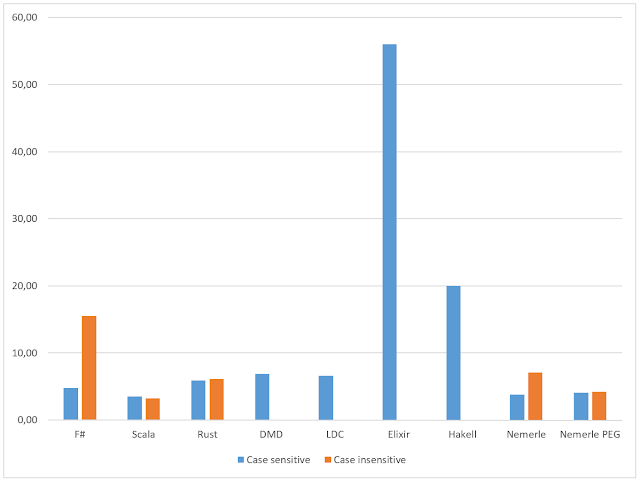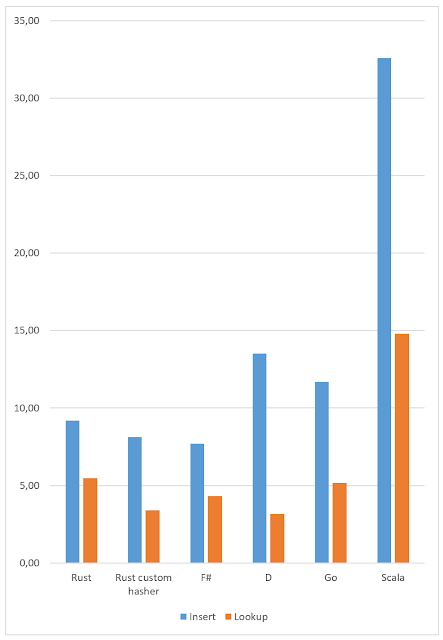STM: F# vs Haskell
STM is a very nice parallel programming model used intensively in Haskell and Clojure. There's a F# implementation which can be found in FSharpx library.
Today I'm going to test performance of both the Haskell and the F# STMs. The test is very simple - read a couple TVars, check their equality, then write them back incremented by 1, repeat a million times.
First, the Haskell code:
So, it took about 170 ms. OK, now F#: It took about 1,6 seconds which is an order of magnitude slower than the Haskell result. It's rather frustrating.



Comments